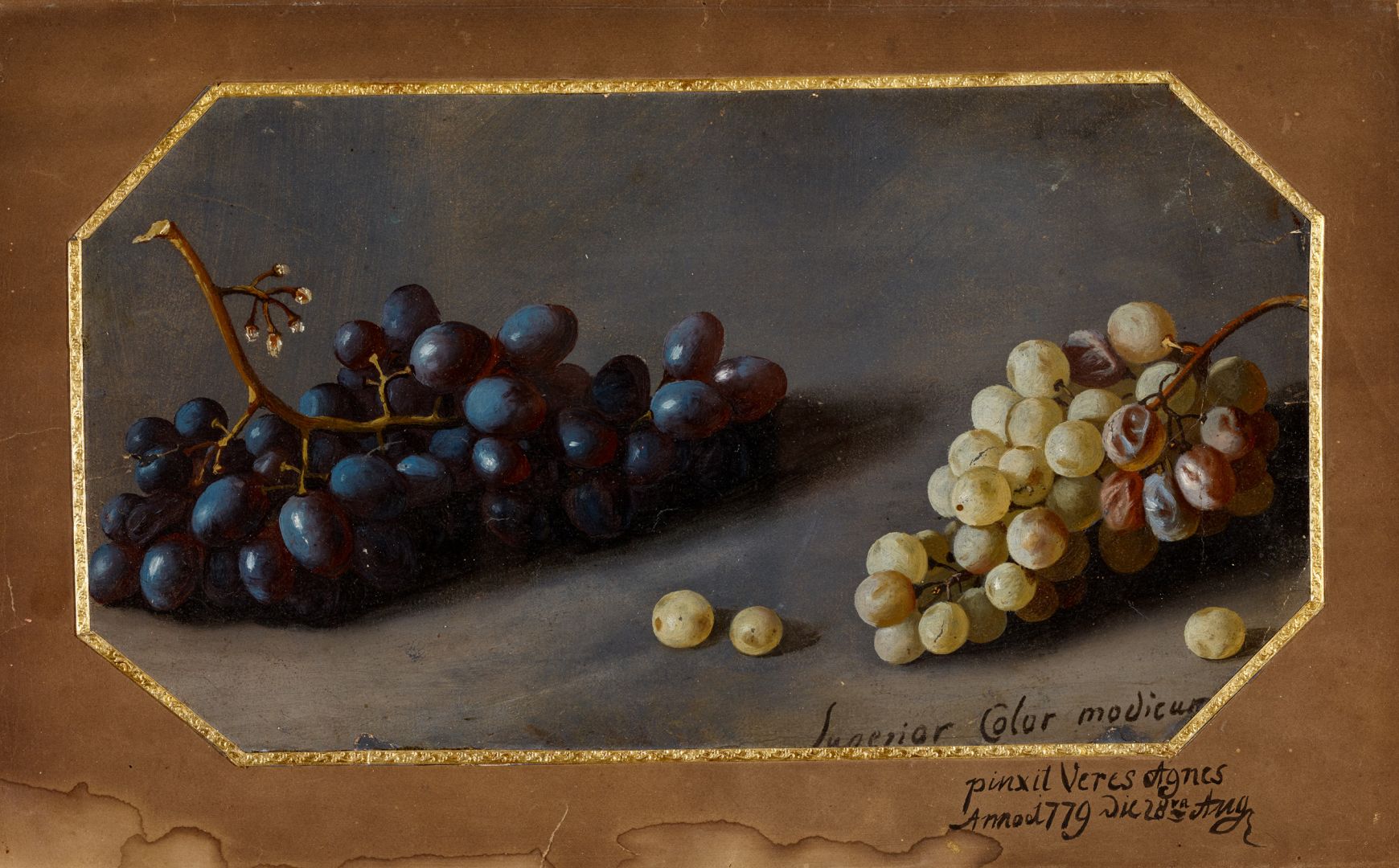Hall 1 - 2. view
Cluster of Grapes
VERES, ÁGNES (1736–?)
Cluster of Grapes, 1779
oil on paper, 18x33 cm; marking in the bottom right: Superior Color modicum pinxit Veres Ágnes Anno d 779 die 28’ Aug.
Fine Arts Collection, Inv. No.: 79.8.
In the 18th century, it was customary among noble families to educate their children in a wide variety of fields, including the fine arts. Surviving pieces of this era’s amateur painting primarily consist of portraits and still life paintings, which showcase the increasing popularity of visual arts in Hungarian culture.
This still life painting of fruit is one of the more exceptional pieces of a genre that was popular among female painters and produced several high quality artworks. It not only fits the general trends of Hungarian art history, but also breaks the mould due to the circumstances of its creator. According to recently uncovered data, she was not taught by a private tutor, but by her father instead.
István Izbégi Veres (around 1698 – 1758) worked in Košice and is considered to be one of the most outstanding Hungarian still life painters of the Baroque period. Known also as Stephanus Veres and István Izbighy Vörös, his characteristic paintings consisted of meticulously composed fruit displays on a table, in front of a dark background. These still life paintings evoke the sense of decay and the temporary nature of things, which adds an extra moral dimension for the art connoisseurs.
The still life painting displayed here is evocative of the style of István Veres in terms of its fine details and the shaping of the grapes. His daughter diligently aimed to master the knowledge that was passed on to her. This gave her a sense of confidence, which is reflected in her signature.
The painting was acquired by the museum through purchase from a private individual in 1979.
Andrea Pirint
